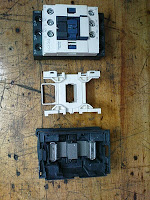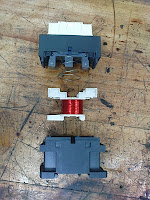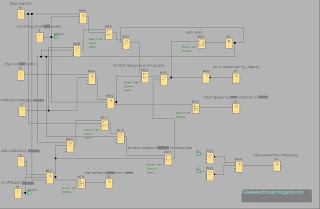Programmable Logic Controllers from the original of which was named PLC, are electronic, primarily circuits - devices with electrical inputs and outputs. We can say that it is a relatively small force computer programmed with its own programming languages.
 |
| LOGO! from SIEMENS |
The Telemecanique zelio of the group Schneider Electric is another, similar, popular small PLC.
It is ideal to start a familiarity with the PLC and have evolved into power and memory capacity making them ideal for many applications.
The demo of the software program called LOGO! Soft Comfort, is freely available and the only function that has cut is the communication between the PC and the hardware device LOGO! made with a special cable. With LOGO! Soft Comfort can each experiment and as he wants to plan the LOGO! in the screen of his computer at no cost.
Programming can be done from the small screen that has the LOGO! but cumbersome method.
The same data apply to zelio.
We can plan with two "languages" the microcontroller LOGO!.
In function block diagram (FBD), as shown in the example of the first image
or ladder diagram (LAD), as shown in second picture.
From the menu of LOGO! Soft Comfort can turn the program easily from one format to another
 |
| fbd |
 |
| lader program |
Despite
This example shows the implementation of the following logic operation:
{
((If you see a trend in both input 1 and input 2)
or voltage appears at the input 3)
and pressed the up arrow of the logo
Then it turned on the output 1.
}
The environment of LOGO! Soft Comfor has option to emulate the operation of the program, which is very useful for finding errors. From this screen modes the pictures are.
Bottom left in the images appear to be activated by clicking the mouse inputs "up arrow", I1 and I2.
With these conditions exit 1 is activated. The lamp Q1 in bottom left of the image is lit.
The blue line in the simulation indicates that it is logical 0 (no current passes) and the red line to logical 1 (current passes).
The output, depending on the model of the LOGO!, Can be activate contact relay or transistor.
For the name of the program elements used some letters and we can put comments to make it more understandable the circuit. The reviews are in fact very necessary, as an important piece of program documentation.
I come from the initial letter of the word INPUT .
B is the first letter of the word BLOCK.
To exit the letter Q is used as the O, the initial letter of the word OUTPUT is like 0 (zero) and is not used . The Q is what is more like the O so it was chosen.
The & is the symbol for logical AND.
The> = 1 is the symbol for the alternative or.
The exclamation point at the end of the word LOGO! is part of the trademark of Siemens

























